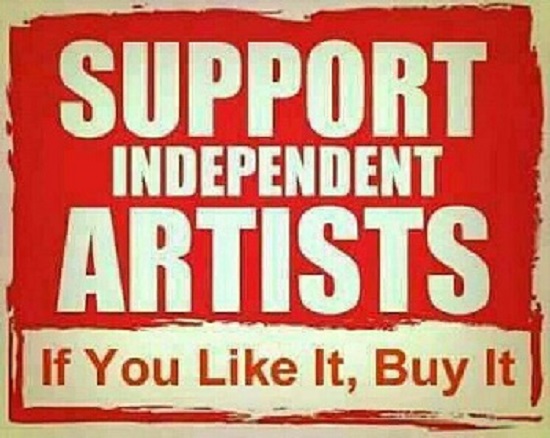
The Guardian published an article a couple of weeks ago by Tim Burgess of The Charlatans about the state of the music business in the light of Brexit, streaming and downloads. It’s an interesting read as far as it goes and it set the cogs whirring about why we got here, where we go next and will it be better or worse, or just different.
In my lifetime, the music business has been turned upside down. In the seventies, bands went out on tour to build up a following and to promote singles and albums, which is where the real money was. If you’ve survived this long and remember all this, bear with me, it’s worth getting some historical context. No internet, no mobile phones, only three TV channels and (until October 1973) no commercial radio. So you were left with the pirates like Caroline and the erratic reception of overseas stations like Luxembourg to let you know about new music. And the music press…
Every week I bought the NME, Melody Maker and Sounds and my paper round meant I could sneak a look at Blues & Soul and Disc/Disc and Music Echo as well. By 1973, with a bar job and a Saturday job with an entertainment agent booking acts for local pubs and clubs, I had a few bob to spend on some of the music I was reading about. Add the cost of my print habit to the cost of buying an album (about five percent of the average weekly wage in the mid-seventies) and being into music was a real financial commitment (even if you took the risk of doing a few temporary swaps with your mates to dip into their choices).
Buying music in the seventies wasn’t just an investment in listening to a piece of music. You exchanged your hard-earned (cash of course) for something physical that you carried home in a bag before lowering it on to the turntable, gently caressing the vinyl with the stylus and waiting for a glorious noise to erupt from the speakers. But let’s just rewind that a few minutes. If you bought an album and you were taking public transport home, you had the chance to look at the album artwork as well. A good album sleeve was so much more than a bit of on-shelf advertising; a twelve-inch square format created opportunities for quality photography and graphic design to enhance the musical content of the package. When it worked, it was an extra visual dimension to a piece of aural art:
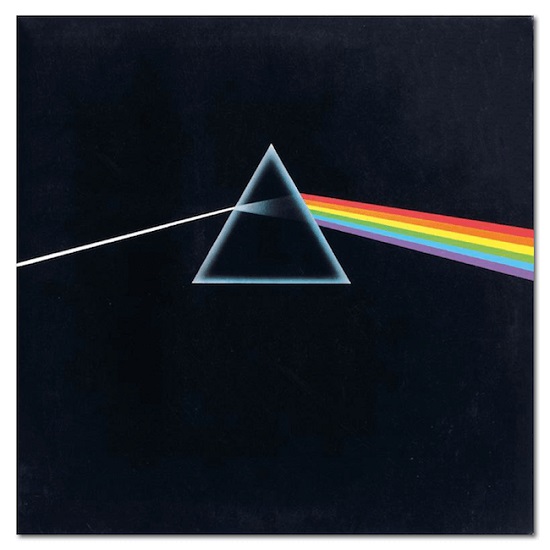
When it didn’t, it looked a lot like this (which proves that you can’t get it right all the time):
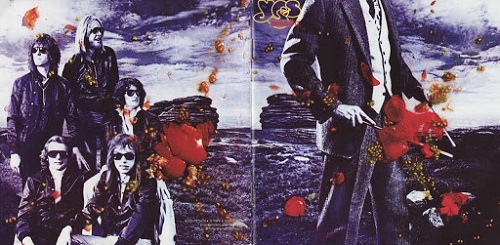
The gatefold sleeve doubled up the visual real estate (exploited perfectly on Thin Lizzy’s “Live and Dangerous” double album with a shedload of Chalkie Davies pics all over the outer and inner sleeves of the album):
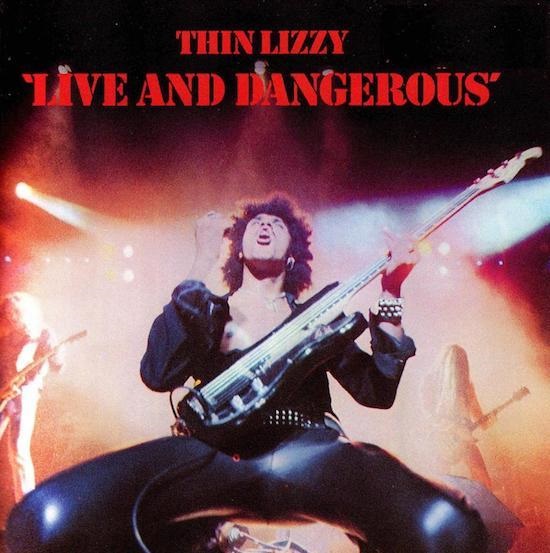
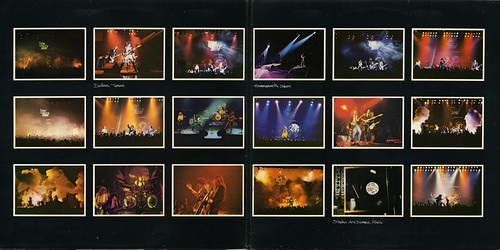
Designers started to exploit die-cut sleeves and all sorts of interesting innovations; PiL’s “Metal Box” looked really clever, but only if you hadn’t seen The Small Faces’ “Nut Gone Flake” packaging twelve years earlier.
The visuals were only part of the album experience; you could get a lot of text on a sleeve, particularly if you had a printed inner sleeve or three as well. There was all the obvious geek stuff; musicians involved, instruments played (or not played if you were Queen) and lyric sheets, but some bands made a real effort; UB40’s cover for the first album “Signing Off” in 1980 was a copy of the unemployment benefit attendance card, they’d been filling in before they broke through. Ten years later, Squeeze released a live album with a boxing concept, “A Round and A Bout” with a little bonus – they listed every gig they’d done between 1974 and 1990 on an insert with the album. Thanks guys, you’ve no idea how useful that’s been to me over the years. Seriously.
I’m sure you get the message by now. During the first vinyl era, the experience was about much more than just listening to the music. You could carry an album around at school as a sign of your taste and discernment and to impress the other gender (I pitied the guys who carried Groundhogs and Genesis albums, but that’s Darwinism for you). It was a bit like creating a mixtape a few years later and a playlist many years later. Or drinking bottled designer lager in the eighties. If you were a fan of music in the seventies or eighties you were committed and attached to it; it had a financial and emotional value. And it had a longer lifespan; since the mid-nineties, the norm is for singles and albums to achieve their highest chart position in the first week of release, but fifty years ago the climb to the top of the charts could take weeks (and probably a few bulk purchases in chart return shops to help it along).
This isn’t a dewy-eyed, rose-tinted trip down memory lane. The seventies and eighties weren’t perfect; the music business was still a business, but it was one where labels invested in bands with a view to development over several years. A moderately successful band writing their own material could make a living for a few years with royalties on sales, radio, juke box and club plays and independent labels were few and far between. Things are a bit more polarised these days; the business only supports guaranteed winners and everyone else has to do their own thing. Time for a bit of a polemic: the technology that enabled the digital revolution degraded our experience of music. Listening to compressed audio on inadequate playback systems is the norm for most people now, despite the vinyl comeback, and the majority of listeners don’t pay any attention to artwork, credits or sleeve notes. We’ve walked blindfold into accepting a gradual erosion of the musical experience in the name of progress and fashion. We also have at least one generation that doesn’t believe in physical musical formats and certainly doesn’t believe in paying for them.
Fortunately the same digital technology that devalued music by making no-degradation copying possible, then compression, along with affordable storage and massive improvements in internet bandwidth, have enabled affordable home recording. Technological improvements cut both ways and musicians are a resourceful bunch; if you can’t get a deal with a major label, what have you lost? You don’t need access to a studio; you can set up at home. You don’t need access to a major label’s mastering and pressing facilities; you can find any number of those online. You don’t need a distribution network; you can load your music up to download and streaming services and make peanuts, or you can sell CDs and albums on your website by mail order and alongside other merchandise at your gigs.
In normal times, this isn’t a bad business model; you might be able to stay afloat if you have another job, have good merchandise to sell on tour, or both. And along comes lockdown; no gigs and no pop-up shop opportunities. I wish I could honestly say that I recommended live streams, but it’s not for me; I really miss the eye contact and (selfishly) I miss the opportunity to take pictures at gigs. If it works for you, that’s great; enjoy it and make a contribution; I’ll be waiting for the moment when live music re-emerges after this terrible disease is brought under control.
Me, I’ll continue to avoid the mainstream by buying (in order of preference) vinyl or CDs directly from artists’ websites, from independent record shops and at gigs. Two people I know have opened vinyl shops in the last few years and both are succeeding despite the current trading situation; long may they continue.
And that resourcefulness and creativity that musicians always demonstrate wasn’t going to be stifled by any number of lockdowns; no way. All of those skills developed and equipment bought to set up home studios have been subtly repurposed to enable musicians to collaborate by sharing audio and video files online. I don’t know any musicians who see this as an ideal situation, but, like solitaire, it’s the only game in town. After nearly a year and millions of audio files bouncing around the internet, albums that were in progress have been completed remotely and albums have been conceived, gestated and born. It doesn’t matter how difficult you make life for musicians (or artists generally), they will always find an outlet.
Whenever we reach the new normal, whatever that may be, spend your money in a way that benefits the people making the music you love. Buy physical copies of music either directly from bands or from independent record stores – there are loads of them. Most importantly, get yourself out to as many gigs as possible. I’ll see you at the front.
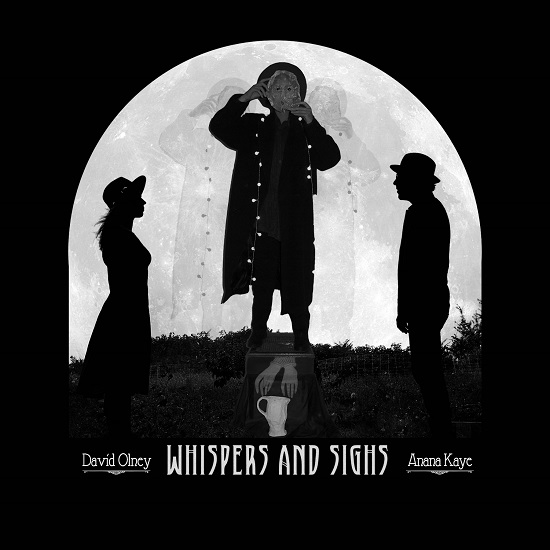
Where do I start with this one? Five stars would be a good place, I suppose. It’s not even five stars that needs a lot of thought. It’s not an album that needs to grow on you; it’s all there instantly first time around. David Olney already has a fabulous legacy, but this is a pretty impressive final piece in the jigsaw. If you absolutely must have a label for it, you would probably go with Americana but there’s a spectacular range of influences and references here, pushing the boundaries in all directions to create a rich and incredibly satisfying album. The album’s credited to David & Anana Kaye (his protégés, for want of a better word), it’s a trio effort with writing and playing credits going to David, Anana, and her partner, Irakli Gabriel. To stretch the Americana boundaries a little further, Anana and Irakli are from Georgia, the one that Paul McCartney sung about, rather than Ray Charles.
Maybe it’s hindsight, with the knowledge of David Olney’s death last year, but ”Whispers and Sighs” has valedictory undertones, particularly the album’s closing song, “The Great Manzini (Disappearing Act)”, looking at life through the eyes of a worn-out and weary entertainer. It sounds resigned and laconic rather than cynical because of the warmth of David Olney’s smooth baritone delivery, the layered a cappella Anana Kaye intro, and the bowed cello and pizzicato violins. It’s the perfect end to the album.
The ideas and influences (musical and lyrical) are varied and you can expect a surprise around every corner, whether it’s the melancholy string fragments that open and bisect the album, “The Station” (Prelude)” and “Sideview (Interlude)”, the layered Anana Kaye celestial choirs or Rolling Stones-influenced dystopian rocker “Last Days of Rome” kicking in like “Start Me Up” and morphing into “Sticky Fingers” era Stones with Bobby Keys-style sax, a raw David Olney vocal and lyrics that obliquely reference the Trump administration.
And that’s just the start, before we get into the Shakespeare references. The title song is influenced by “Romeo and Juliet” and features Anana’s layered choral vocals and a string quartet, while the busy and angry uptempo “Lie to Me Angel” ends with David declaiming King Lear’s ‘blasted heath’ speech to end the piece as the manic backing fades out. Coming straight out of “Lie to Me Angel”, almost without a gap, is “Thank You Note”. It’s a song with a sinister feel, a tango overlaid with Eastern European strings and lyrics hinting at supernatural histories. You could imagine this song soundtracking a vampire movie.
“Whispers and Sighs” is a classic album, seamlessly pulling together a huge variety of musical references to create a work that surprises at every musical turn and is packed with subtle and thought-provoking lyrics that encourage the listener to think, rather than hammering a message home. As well as the classic country themes of longing and regret, you’ll find anger, mystery and history in my favourite album of the year so far.
This album is a fitting memory to David Olney as the flame passes on to Anana and Irakli.
“Whispers and Sighs” is released in the UK on Friday March 19th on Schoolkids Records (SMR-067).
Here’s a sneak preview with the video of “My Favourite Goodbye”:
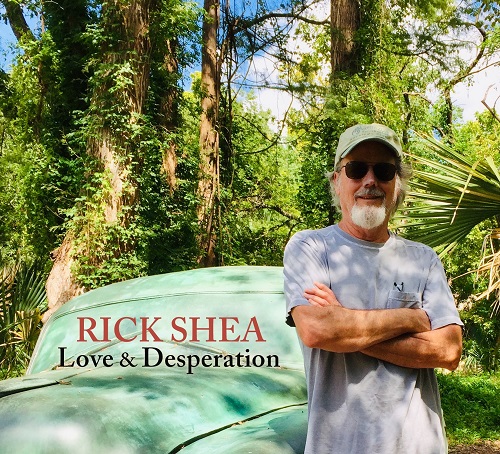
We’ve all been reminded over the last year that music is a social phenomenon. Musicians love to work together, in the same room, face to face. Most of them love to interact with audiences in the same way, up close and personal and we’ve missed out on that over the last ten months in the UK. But life goes on and we adapt; the conditions aren’t ideal but musicians are collaborating online and still producing great albums and singles. Rick Shea’s twelfth album “Love & Desperation” is one of those collaborations, started under fairly normal conditions in 2019 and completed under COVID conditions in 2020.
The playing throughout is subtle and understated; the album relies more on subtlety and nuance than technical wizardry for its impact (that and a tidy selection of songs across a range of styles, with a few little surprises thrown in) and some interesting song pairings across the album. The fact that Rick has a voice that bears comparison with Merle Haggard might also help a bit. There’s also a suggestion that, after forty years as a musician, Rick might be thinking about his legacy; there’s a hint of that with the inclusion of the moody and atmospheric Mexican noir story “Texas Lawyer”, which closes the album, which appears for the third time on one of Rick’s albums.
So, how about those pairs of songs? Well, “(Down at the Bar at) Gypsy Sally’s” (taking its title from Townes Van Zandt’s “Tecumseh Valley”) and “She Sang of the Earth” look at different diversions, one physical, the other spiritual, but equally temporary. The arrangements echo the themes for each song with a gentle country feel for “She Sang of the Earth” and a more sinister guitar and accordion-led styling for “Gipsy Sally’s”, which instantly evokes the Doors’ “People Are Strange”; and that’s appropriate given the list of characters that populate the song.
“Gipsy Sally’s” neatly ties in with “The World’s Gone Crazy”, tying in the Doors instrumental style to the lyrical style and structure of a gospel song; it’s another example of the album’s eclecticism, from the standard slow blues of “Blues at Midnight” to the mariachi polka of “Juanita (Why Are You So Mean?)”. The musical variety of the songs is matched by the range of lyrical themes from the album. There’s the love song “A Tenderhearted Love”, which Rick felt he owed his wife, the references to the harshness of Nashville in the title song “Nashville Blues”, and the environmental and social concerns of ”Big Rain is Comin’ Mama”.
There’s plenty of love running through this album; love for music, love for family and love for the world and, honestly, very little desperation. If this is Rick Shea’s shot at a career-defining album, then it might just have done the trick.
“Love & Desperation” is released in the UK on Friday February 12th on Tres Pescadores Records (TPCD-12).
Here’s the video for “The World’s Gone Crazy”:


